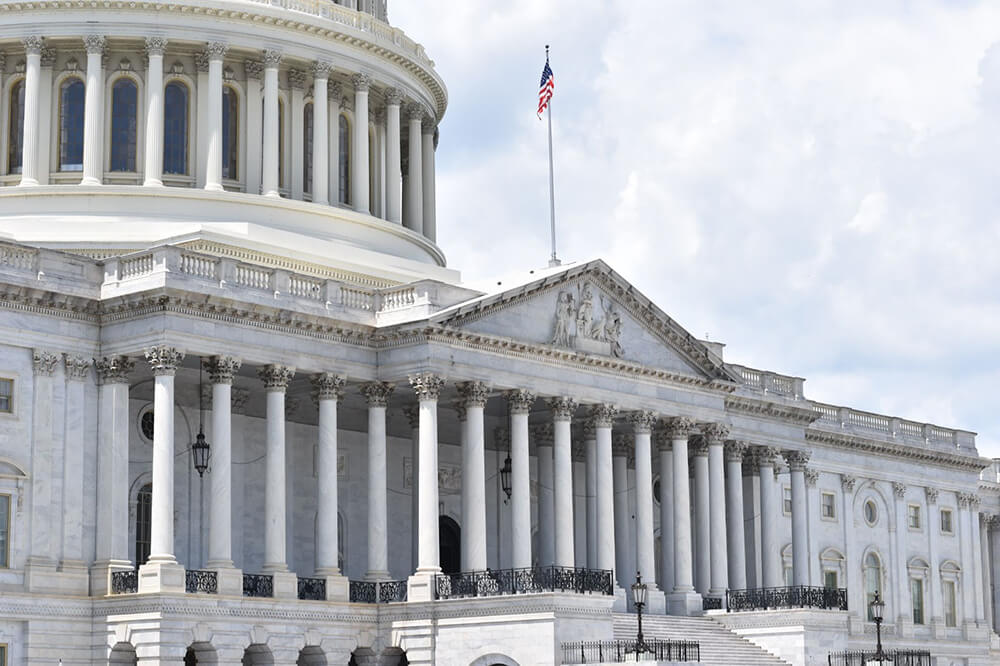
What Does The Debt Ceiling Agreement Mean for Student Loans?
The debt ceiling has been one of the main objects of discussion in Washington lately, covering numerous related topics, from social security to inflation. On June 3, after an agreement to raise the debt limit was finally reached, the deal was finally signed into law by President Biden.
In this article, we’ll explore what the debt limit agreement passed by the Biden administration means for student loan borrowers and how it could affect them. We’ll look at what the deal entails, how it could impact borrowers, and what options they have moving forward.
What is the Debt Ceiling, and What is the Last Deal About?
“Wait a minute. Debt ceiling?” It might sound like some Wall Street lingo, so let’s unpack it.
Think of it as the U.S. government’s debt limit. That’s right; even Uncle Sam has spending caps. However, this limit is self-imposed. It’s Congress who sets the bar. The freshly inked law by President Joe Biden does exactly that. It raises the bar. More room for Uncle Sam to borrow and increase spending by hundreds of billions and avoid spending cuts. This allows the government to keep meeting its commitments in areas like social security, health care spending, food stamps, energy projects, and defense spending. Then, there’s interest on our national debt, plus tax refunds. Essentially, the debt ceiling bill stops us from skipping out on these payments.
As reported by ABC News, the debt ceiling deal boosts this limit considerably. “But Why should I care?” you may wonder. Because it matters. By expanding our debt limit, this law doesn’t only prevent a historic default but touches upon federal spending across numerous sectors. And yes, that includes the education sector. Your student loans, to be precise.
Key Takeaway: The debt ceiling agreement between President Biden and Congress raises the bar for how much the U.S. government can borrow and spend. This agreement could potentially affect spending across numerous sectors, including student loans. The implications of this deal should be monitored closely by those with outstanding student loan debt.
The Connection Between the Debt Ceiling Agreement and Student Loans
Chances are the connection is more direct than you’d think. Picture the U.S. Department of Education as a lender. Where do they get the cash? You guessed it: the U.S. Treasury Department.
In reality, our federal student loan system leans heavily on Uncle Sam’s borrowing prowess. So, when borrowing and spending patterns change at the federal level, guess what? That directly impacts student loan programs. A shift, a shakeup, or any form of movement in this financial dance could potentially change the game.
The recent debt ceiling deal is a prime example. Imagine if it influences the money that the government sets aside for education. Suddenly, the student loan landscape might look different.
There’s more to these programs than just funding. It’s also about your loan interest rates and even how long you have to pay back that money. Sounds serious, doesn’t it?
The National Association of Student Financial Aid Administrators agrees with that belief. They warn us that clauses tucked away in such federal financial laws can tweak the funding for student loan programs. That means your loan could change because of something decided in a far-off government building.
Key Takeaway: The U.S. government’s debt ceiling agreement is directly connected to student loans. Student loan programs rely on the government for funding and, potentially, other factors such as loan interest rates and loan repayment terms. Any change in federal spending or borrowing could have a direct impact on existing student loans.
Possible Changes to Federal Student Loan Programs
“Okay,” you might say, “What does that mean for me?” The ripple effects of the debt ceiling agreement might reshape the terrain of federal student loan programs.
What does that mean? Well, we could see changes in interest rates, student loan repayments, loan accessibility, and more. Let’s peer a little deeper into this financial rabbit hole.
Interest rate adjustments – Let’s talk interest rates. They hold significant weight in the realm of education loans. These rates are decided by Congress, and shifts in government spending could give them a nudge. The Federal Student Aid folks tell us that interest rates for undergraduate Direct Subsidized and Unsubsidized Loans handed out between July 1, 2022, and July 1, 2023, stood at 8.25% and 9.5%. If the debt ceiling agreement whispers in the right ears, these rates might sway, tweaking your loan’s total cost.
Alterations to repayment terms – Then there are the repayment terms. They could also get a makeover. Let’s discuss the size of your monthly payment and how long you must pay it. For example, if you borrowed $30,000 for your studies and earned $40,000 annually, you’d spend roughly 20 years repaying under the current income-driven plans. But, with these looming changes, this timeline could wobble.
Loan Availability – “Will I still get a loan?” You may wonder. When covering student loan payments, there are numerous federal programs offered, nearly 90% of which are supported by the U.S. Then, the Public Service Loan Forgiveness program had over 227,000 applications by 2020, resulting in a reduction of debt for many. But here’s the catch – tweaks in federal spending and budget choices could shake up the number of new loans granted or the total loan amount up for grabs.
Changes to income-driven repayment plans – Many of us lean on income-driven repayment plans. They make our monthly payments a manageable slice of our income. The TICAS calculations using FSA Data Center data revealed that as of September 2020, over 8.5 million are using Income-Driven Plans. Department of Education. However, the ripple effect of the debt ceiling agreement could mean changes to these plans, shaking up your monthly dues.
Loan forgiveness program adjustments – If you are counting on Public Service Loan Forgiveness or income-driven repayment forgiveness, be careful. These programs offer many of us a lifeline, promising to wipe out the remaining debt after a set period. Particularly, the Students Loan Forgiveness program had an impressive 463,444 approved student applications in 2021. But remember, these programs could also see some shifts.
Key Takeaway: The U.S. government’s debt ceiling agreement could have a ripple effect on federal student loan programs. Changes in interest rates, repayment conditions, loan accessibility, and more are all possibilities. Those with outstanding student loan debt should keep an eye on the implications of this deal so they can better prepare for potential changes to their loans.
Strategies for Managing Student Loans in Light of the Debt Ceiling Agreement
Let’s first have a look at the best strategies for those who already have a student loan.
Refinancing – A potential solution for student loan debt is refinancing. This involves applying for a new loan with a lower interest rate from a private lender, possibly saving you thousands of dollars overall. According to Credible’s 2021 report, borrowers who refinance into shorter terms see an average savings of $16,943 in total payments. Though, if you refinance a federal student loan, some of the advantages, like income-driven repayment plan access or loan forgiveness, may not be available.
Consolidation – For those who are struggling to manage multiple student loans, loan consolidation might be the ideal solution. Combining all federal loans into one simple repayment plan can help make paying back your debt easier. According to the U.S. Department of Education, this could also reduce your monthly payments by lengthening your payment period – but keep in mind that it may increase how much you pay over time due to a longer repayment timeline.
Alternative Repayment Plans – The federal government offers a range of payment plans designed to accommodate different budgets and circumstances. Those struggling with their repayment plans should consider an income-driven payment option that can set lower monthly payments based on a certain percentage of one’s income. Don’t stay stuck in an unworkable situation; explore other alternatives!
For future borrowers, consider this a wake-up call. As the Institute for College Access & Success reported, the average student loan debt last year for those who graduated was $28,950. Rather than relying heavily on student loans, consider these alternatives.
Scholarships – With multiple millions of unclaimed scholarship dollars every year, taking advantage of accessible resources is important. Scholarships.com and Fastweb allow you to discover scholarships tailored specifically to your qualifications and interests, helping you access funds that would otherwise remain untouched. By taking a few minutes out of your day searching through these platforms, you can uncover award opportunities waiting just for you!
Affordable schools – Higher education need not be costly. Think about checking out community colleges or public universities for more affordable options. The College Board discloses that an in-state public university for 2020-2021 will cost a student $10,560 in tuition, and out-of-state will cost $27,020 – far cheaper than private colleges, which normally run an average of about $37,650 per year.
Part-time employment – Managing studies and work can be challenging, yet worth it. The National Center for Education Statistics says that in 2018, more than 4/5ths of part-time undergrads had some form of employment, coaxing us that, as borrowers, we need to stay aware and responsive. For full-time students, that number was almost half of them (43%). Juggling both responsibilities is tough but helps with covering expenses.
Key Takeaway: The U.S. government’s debt ceiling agreement may trigger changes in the student loan market, leaving many current and future borrowers unsure of what to expect. To prepare for such potential scenarios, borrowers should consider refinancing or consolidating loans, exploring alternative repayment plans, taking advantage of available scholarship opportunities, considering more affordable schools, and working part-time to cover educational expenses.
Read More: How to Get a Loan for Debt Consolidation
So Is This Debt Ceiling Deal Ultimately a Good Thing for Students?
The overall impact of this deal on students is difficult to assess at the moment.
The most obvious benefit of the debt ceiling deal is that it will help to stabilize the US economy and reduce the risk of defaulting on existing debts. This could potentially lead to lower interest rates for student loans, making it easier for students to pay off their debts.
Moreover, by reducing the amount of money borrowed from foreign countries, the US government can use more funds for domestic programs such as education and student aid.
On the other hand, there are some potential drawbacks to this deal. For example, if Congress fails to raise or suspend the debt ceiling in future years, then it could lead to further economic instability and higher interest rates on student loans.
Additionally, some critics argue that this deal does not address the underlying causes of our nation’s growing debt problem and does not provide any long-term solutions for students.
Ultimately, whether or not Biden’s plan l is ultimately a good thing for students depends on how Congress chooses to use these funds in future years. If they invest in programs that benefit students such as financial aid and loan forgiveness programs, then it could be beneficial for them in the long run.
However, if Congress continues to prioritize short-term gains over long-term solutions then it may not be enough to truly help students in need. One thing is certain: this deal will be a very hot topic during the upcoming presidential election’s debate and will continue to be a continuous object of discussion over the next decade.
Final Thoughts on the Latest Debt Ceiling Agreement
This recent debt ceiling agreement is a reminder of how interconnected our financial system is. An adjustment in one area (federal borrowing limits) can trickle down and impact other areas (student loans). It is also a reminder that we, as borrowers, must stay informed and adaptive.
Managing student loans can feel daunting, but it’s not impossible. Changes will come, and laws will be altered. Staying informed and being proactive can help us navigate this ever-changing landscape. Above all, staying informed about changes to student loan policies and programs is vital. The Federal Student Aid website is a valuable resource.
And let’s not forget how many other areas outside of student debt are going to be affected by this deal, including both domestic spending and non-domestic one. From defense spending to temporary assistance to medical care to clean energy provisions to housing assistance and programs for homeless people.








Sorry, the comment form is closed at this time.